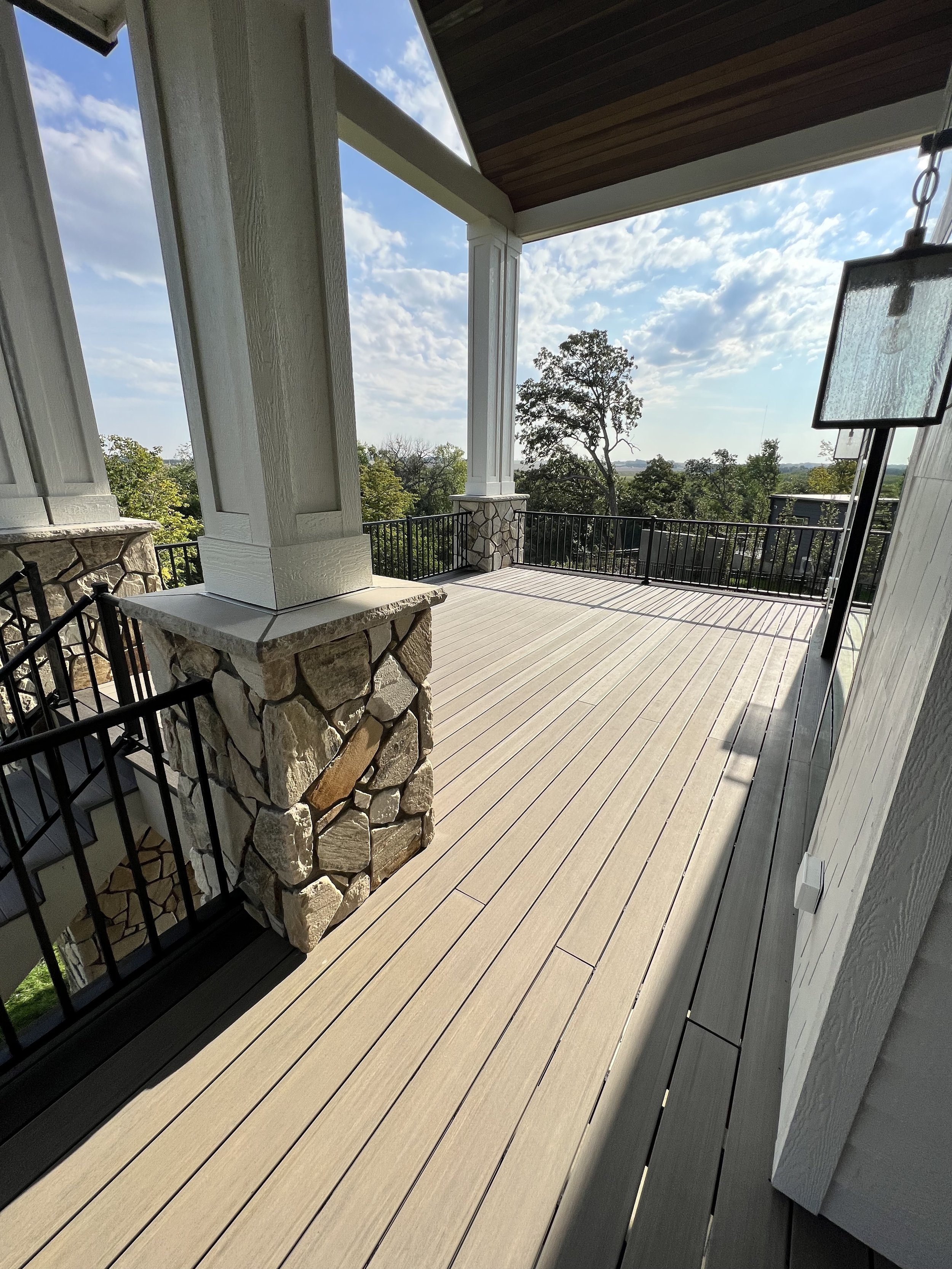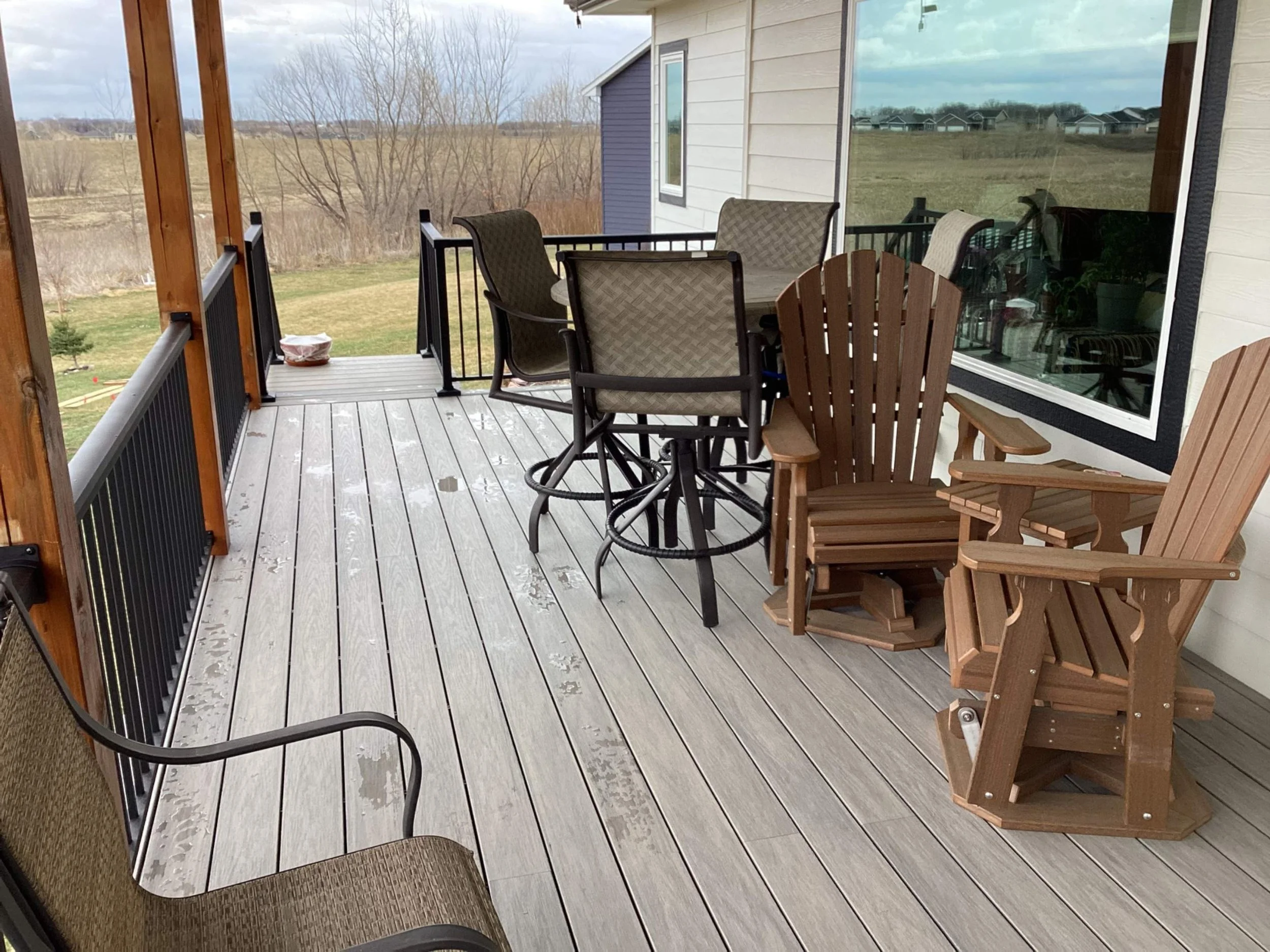PVC Deck Boards
TimberTech by AZEK and Wolf Serenity - Two Manufacturers a Step above the rest
First, let’s take a look at the breakdown of PVC Deck Boards compared to Composite
PVC Deck Boards
Are much lighter weight than composite.
Have a 50-year limited warranty and generally speaking, will last longer than composite. (The one exception is the Trex 50-year board they just came out with in 2022 (I think). This is reported to last 50 years, but I can’t say for sure beyond the limited 50-year warranty they provide.)
Doesn’t seem to hold any smell or stains from pets or animals
Seems to have a better anti-slip texture to the top of the board
Is cooler to the touch in the direct summer heat. This also helps with preventing the boards from sagging.
Composite Deck Boards
Are much heavier when installing. Prone to warping as the boards heat up and cool down throughout the seasons
In more cases than not, have a 25-year, but can go up to a 50-year limited warranty (like Trex does).
Can absorb pet & animal odor if not properly installed.. and even then still may soak into the composite on grooved boards that use the hidden fastener system
Seem to be a little more scratch resistant than PVC when installing it. But PVC scratches are easier to fix by heating them up with a heat gun or hair dryer.
TimberTech by AZEK with Slate Gray boards for the main color and a border color of Coastline
For the higher end PVC deck boards, we have installed AZEK boards more than Wolf. But that’s partially for 2 reasons, both related to logistics:
Wolf is a fairly new board for the northern mid-west region. However, the company has been around for over 100 years, and their boards have developed a tried and true reputation along the east and west coast of the United States.
AZEK boards are available at almost every regional lumber yard, where as Wolf, so far, we’re the only ones in the area selling it.
One downside to ANY PVC deck board is that it’s flimsy. It will follow the contour of your framing below. In our part of the United States, most of the lumber is wet from the pressure treating process. Which means each joist will shrink at a rate unique to that specific board. This will cause a slight wave in each deck. And, unfortunately, the larger the joist, the more likely there will be a wave.
Side note, if you have an existing deck that has this problem, reach out to us and we can help correct it.
Overall, AZEK boards have been really easy to work with, provide a lot of different color options, and hold up to their durability reputation.
Wolf Serenity Decking
Wolf has been a tremendous product to work with. It’s a 2 sided board and does just as well as TimberTech PVC boards.
Pro: Wolf is a 2 sided board. Meaning, it has the same texture on both sides of the deck. From a home owners perspective the board looks good under the deck (good for when you have a patio below the deck) and from an installers one, if an unrepairable scratch occurs, the board isn’t wasted.
Pro: The PVC doesn’t absorb the heat as much as composite, and does seem to hold up better with winter salt. DISCLAIMER: I don’t know what any of the official recommendations are from Trex, TimberTech, or Wolf when it comes to applying salt in the winter to keep the ice off. I must point you to each manufacturers warranty to read the fine details.
Pro: The texture of the board seems to be deeper and provides slightly better traction in certain situations (think pool decks or high humidity environments, but doesn’t necessarily include ice).
Con: Same as TimberTech’s PVC, it can wave if the there is significant shrink as the framing lumber dries out. PVC Deck boards are durable, but flimsy.
Wolf overall is just as good as TimberTech PVC, if not just slightly better in some circumstances. If anything, offering both TimberTech and Wolf will give you additional color choices to consider when picking it out to match your home.


